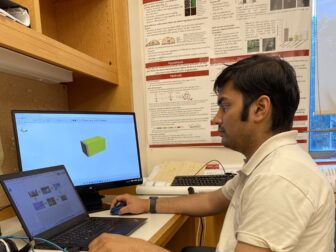Shamimur Akanda, PhD

Computational Modeling to Predict Drug Behavior in Treating Joint Diseases
Summary
Injecting medicines directly into the joint is an efficient, targeted approach to treating diseases such as osteoarthritis. Many factors influence a drug’s residence time in the joint, or how long it remains attached to its biological target, including the properties of the drug itself, the interaction between the drug and surrounding tissues, and the material carrying the drug. Using these parameters, I developed a computational model for predicting drug residence time in the joint after being injected with and without a slowly releasing drug carrier. This model successfully predicted that drugs from a slow-release carrier have elevated residence time in the joint and are associated with a lower peak drug concentration in the tissue. I plan to validate this model by tagging drugs with fluorescent markers that can be traced as they move through the small animal joints to compare drug residence time for small molecule drugs delivered to the knee joint within and without a drug carrier. The ability to successfully predict a drug’s residence time could help improve the design of preclinical experiments and reduce the number of animal studies normally needed to figure out drug dosing for joint disease treatments.
Watch a Q&A with Shamimur
I am incredibly honored to receive the PhRMA Foundation Postdoctoral Fellowship in Drug Delivery. This award will help me to develop a robust in vitro in vivo correlation model for intra-articular drug delivery and to advance the field of drug delivery.

